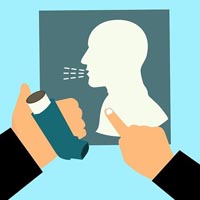Comparative efficacy of interferential therapy, bronchodilators, and body positioning on asthma control and quality of life of patients with bronchial asthma: A study protocol

Accepted: 11 January 2022
HTML: 108
All claims expressed in this article are solely those of the authors and do not necessarily represent those of their affiliated organizations, or those of the publisher, the editors and the reviewers. Any product that may be evaluated in this article or claim that may be made by its manufacturer is not guaranteed or endorsed by the publisher.
Authors
Interferential Therapy (IFT) is the application of two medium frequency currents to the skin to stimulate and activate different systems in the body using specific frequencies and frequency ranges. The aim in applying IFT is to reduce myalgia in the chest and upper back, reduce muscular fatigue, and induce mucus expectoration. This study is designed to test the efficacy of IFT in reducing the symptoms frequently experienced by patients with bronchial asthma. Forty-eight (48) patients aged 18 and above with bronchial asthma attending the respiratory clinic at the Lagos State University Teaching Hospital, Ikeja (LASUTH) will be assessed for eligibility. The study design will be a double-blinded, randomized control trial with four intervention groups and four parallel placebo control groups. IFT will be administered as an intervention to patients on short and longacting bronchodilators in an assigned fundamental body position for 20 minutes. Six continuous outcome variables at different points will be utilized as outcome measures. A baseline Pulmonary Function Test (PFT) will be conducted on entry into the study while quality of life and asthma control will be evaluated every two (2) weeks during the study. Data obtained will be analyzed using descriptive and inferential statistics of repeated ANOVA; P<0.05. The study outcome will compare the efficacy of IFT on bronchial asthma, identify its effect in different body positions, and compare the relationship between its application and the bronchodilator medication frequently used by the patients.

 https://doi.org/10.4081/hls.2022.10251
https://doi.org/10.4081/hls.2022.10251



